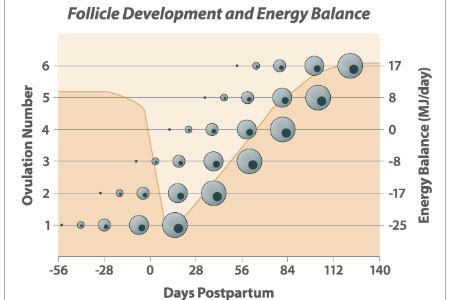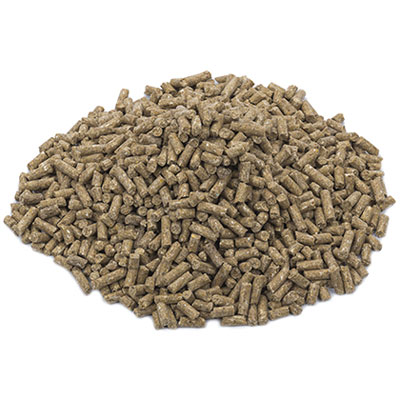Dairy Advice - Spring
Nutrition and Reproduction
Successful mating starts well before the breeding season. As demonstrated in the diagram [1], the follicles released during the pre-mating heats start developing even before the cow calves. The follicle we hope to successfully mate starts developing within a week of calving. The nutrition and management of the cow through these follicle waves will have an impact on the strength of heats and the viability of the egg to be mated.

The concept of negative energy balance is well understood. The reality is that as the herd approaches peak milk (40 – 60 days from the mid-point of calving), it is physiologically impossible for the cow to consume enough energy to meet her demand for lactation. If peak milk is occurring beyond 60 days in milk, there is even greater competition for energy allocation and invariably cycling will suffer. The opportunity lies in the fact that management and nutrition can influence the depth and duration of negative energy balance.
This starts with having cows well set up:
- healthy calving with minimal metabolic disease challenge and a body condition score of 5.0; losing no more than 1 BCS (within the first 70 days in milk)
- maintaining or increasing body condition as the herd approaches mating
First and foremost, pasture allocation needs to be well managed. Pasture budgets should be structured to achieve a target dry matter intake of 4% of live weight (e.g. 18.8 kg DM eaten and at least 23.5 kg DM offered for a 470 kg cow). To achieve this level of intake on pasture, managing quality is essential.
For lighter cows, or at-risk cows (e.g. lame, mastitis, cows who have endured metabolic challenges at calving) special care is needed to ensure body condition gain as mating approaches. Options include:
- Strategic use of once-a-day milking reduces the daily walking distances and limits production levels allowing greater energy from the diet to be diverted to condition gain and cycling activity
- Preferential feeding can be achieved by:
- Improved grass allocation
- Offering energy-dense silages (to identify which line of baleage, or silage pit is of the best quality get the feed tested)
- Supply of an energy-dense concentrate in the shed.
[1] Adapted from Britt, J. The Bovine Proceedings No 24. January 1992

Hi Starch
A fully balanced pellet that provides a range of starches with different break down rates. This makes the starch available in the rumen for longer and creates a more stable and efficient environment.

